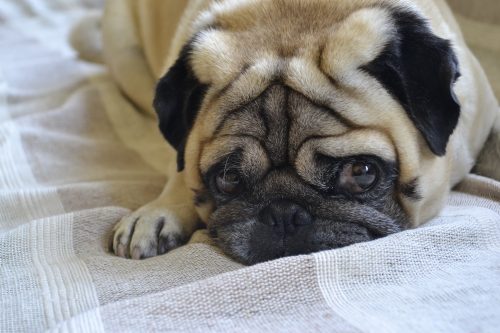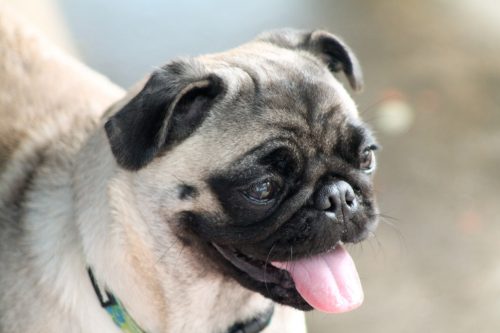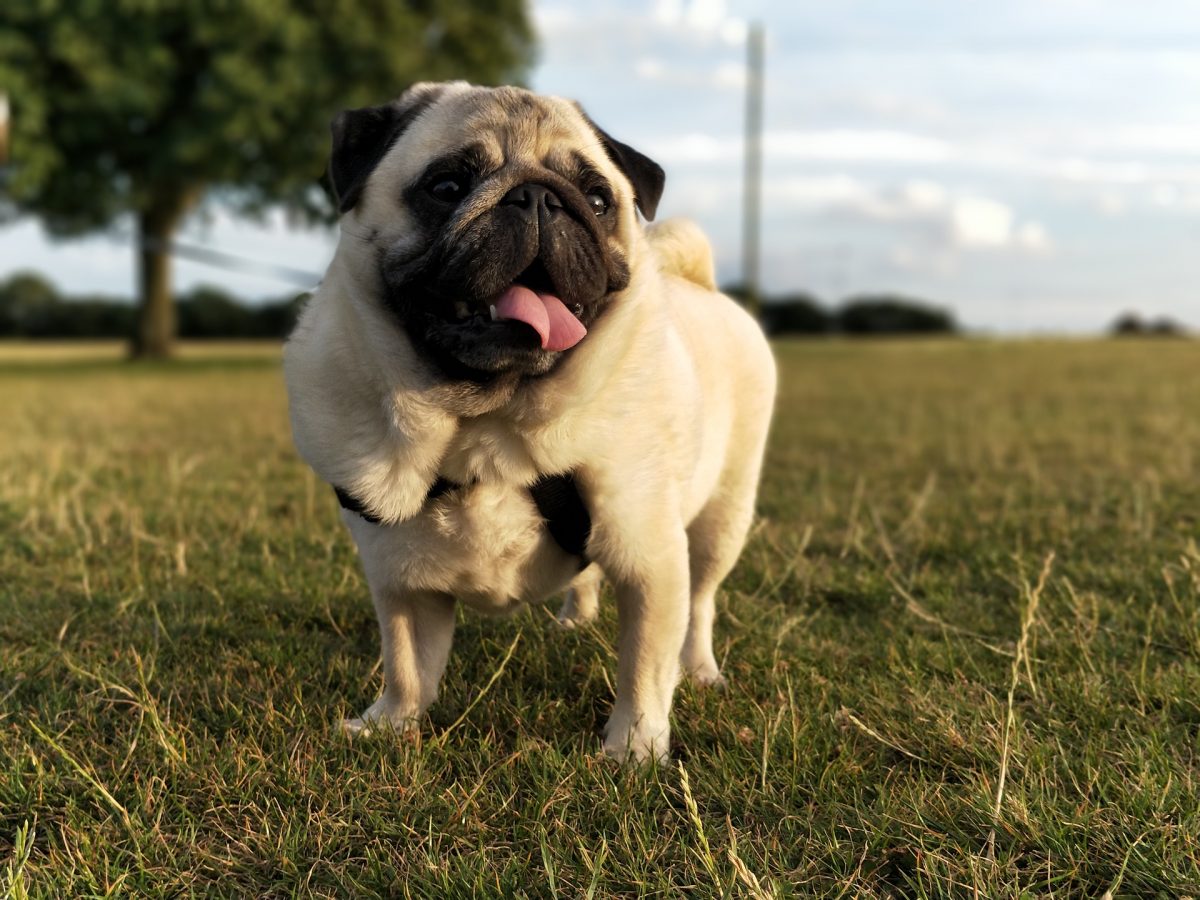When looking to add a dog to your family, one of the first factors you must take into consideration is which breed best fits your lifestyle, personality, and interests. Each dog breed has breed specific characteristics that govern their overall temperament, needs, and potential health issues.
With this in mind, each dog has their own unique personality and temperament within the overall breed and finding the right fit for you will leave you with a dog that brings you joy and lightens your life
If you are considering a Pug as the right breed for you, you may be asking yourself, are Pugs aggressive? Pug aggression can arise and may be brought on by a variety of external variables, and knowing the inner workings of potential Pug aggression will help you make an educated choice about whether or not a Pug is the right furry friend for you.
Pug Temperament
When analyzing whether or not Pugs can be aggressive, it is important to establish a baseline of typical Pug traits and characteristics. Pugs are known for being extremely loyal and loving to their owners, and possess a silly streak that has earned them a reputation for being the clowns of the canine world.
Pugs are often intelligent, which can lead to them being mischievous and headstrong when attempting to train them. Pugs are small in stature and were originally bred to be a lap dog, which results in many Pugs being very affectionate with their owners and wanting to be as close to them as possible.
Aggression in Pugs
Though Pugs can be very friendly and loving, they can become aggressive when not properly socialized. Aggression in Pugs is often manifested in barking, lunging, nipping, or growling.
Pugs may be trying to establish dominance within a space that they feel is their territory through this behavior.
Often, aggression in Pugs is also the result of a fear response. When a Pug is not properly socialized with other dogs, people, children, and noises, Pugs will react adversely when it comes into contact with these people, animals, or sounds due to their own anxiety and fear.
Pugs may also only exhibit aggression within a certain context, known as a trigger, which is a unique situation that brings out a certain behavior in the Pug. Triggers vary widely between dogs depending on the breed, individual personality, and socialization as a puppy. Pugs may also demonstrate aggressive behavior in response to being left alone in an attempt to make their unhappiness known.
Causes of Aggression in Pugs
The causes of aggression in Pugs can vary greatly between dogs due to their genetics, socialization, training, and environment. If a Pug has one parent that is aggressive in nature, that may be passed down and may be a reaction exhibited by the puppy as well.
In addition, if a puppy grows up around a parent that frequently shows aggressive behavior, they will begin to mimic this behavior as they become an adult. Another frequent cause of aggression in Pugs is a lack of proper training and socialization. Having a dog is a tremendous commitment and requires an owner willing to dedicate the time and resources necessary to show their dog the world and teach them how to properly respond to it.
Having a dog is a tremendous commitment and requires an owner willing to dedicate the time and resources necessary to show their dog the world and teach them how to properly respond to it.
In addition, Pugs that have been abused or frequently exposed to high-stress, traumatic situations may also develop aggressive behaviors. Another possible cause of aggression in Pugs is a negative developmental experience that has left a lasting impression.
One example is if a Pug puppy is introduced to another dog that tries to bite your dog or is overly rough with him, then your pup may respond negatively in the future when meeting a different dog because it remembers his prior negative experience and has developed a fear response.
 Preventing Aggression in Pugs
Preventing Aggression in Pugs
Though Pugs can develop aggressive behaviors, they do not always exhibit aggression and innate aggressive behaviors can be remedied through training and dedication.
One of the most important things you can do to help prevent aggression in your Pug is to properly train and socialize him for the entirety of his life.
As owners, you teach your dog how to see and respond to the world around them. It is important to put your Pug in a variety of situations with different people, dogs, children, sounds, objects, so that if any aggressive behavior arises, you can correct it and teach your dog to respond differently in the future.
It is also important to research the lineage of your dog before choosing him as genetics play a role in behavior and it is always best to meet the puppy’s parents if possible to gauge if their personalities are desirable for your lifestyle and family.




